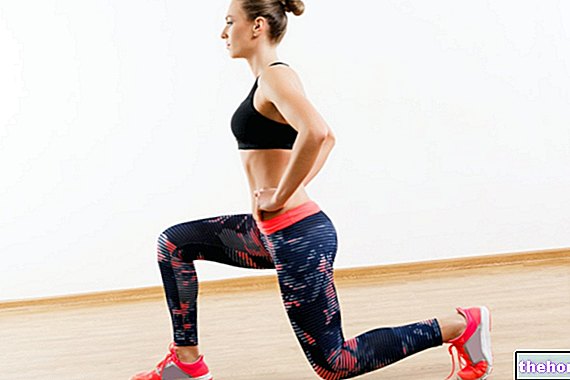
Aerobic training for fast middle distance athletics
Means for the development of aerobic RESISTANCE:
- Slow running at 80-90% of the anaerobic threshold - SA (o deflection value - see), for 12-18km
- Average run at 90-95% of HS, for 8-12km
- Progressive race from slow to beyond the vd, for 8-12km
- Fartlek with short variations of 30 "", medium of 1-2 "and long of 3-6", from 40-60 "TOT
- Long repetitions of 2000-3000m in SA with active recovery of 1000m slow or passive of 1 ", for 8-12km
- Short repetitions of 600-1000m in SA and breaks of 30 "" - 1 "for 6-10km.
Means for the development of aerobic POWER:
- Repeated at speeds between vd and Vamax (see: "Fast middle distance in" athletics "- paragraph:" Importance of energy metabolisms ") of 1000-2000m, for 6-8km with breaks of 2-3"
The Va max corresponds approximately to the race speed in 3000m
- Repeated at Vamax of 600-1600m for 6-8km with breaks of 3-5 ".
ANAerobic training and SPECIFIC RESISTANCE for fast middle distance athletics
All exercises which, in training, induce a stimulus similar to that of a competition are defined as specific; in fast middle distance, the running intensities are defined specifications they are different and can be: much higher than that of competition (development of anaerobic power) or between Vamax and that of competition (development of anaerobic capacity). All these, with the exception of those for the development of resistance to speed, must be inserted after the 2nd FUNDAMENTAL cycle which corresponds to the ability to produce up to 8-10mmol of lactate (Vamax).
Means for the development of RESISTANCE TO SPEED ": repetitions or series of repetitions over distances between 60 and 150m.
Means for the development of LACTACID CAPACITY:
- Repetitions of 300-600m with speed higher than the race one in the short ones and between the Vamax and the race one in the longer distances; they can also be performed with the repetition series method (shorter pauses and scaling with training progression).
- Race rhythms to develop specific speed and the ability to run in decontraction; they are used in the pre-competitive period and have ample breaks to ensure maximum concentration and proprioception
Means for the development of LACTACID POTENCY:
- Repeats of 200-500m at high speeds with large pauses
- Test at MAXIMUM speed or races over shorter distances than the official race.
Strength training for fast middle distance athletics
Strength training for fast middle distance running in athletics is essential for 2 reasons:
- is the fundamental basis of speed,
- the middle distance runner must achieve the ability to maintain the most correct technical gesture possible until the end of the race (precisely by optimizing the strength and the supply of energy to the muscles).
It is however necessary to take into account some particularities related to the specialty:
- Limit hypertrophy in order not to risk increasing muscle viscosity and reducing vascularity
- Limit the development of the explosive force in favor of the explosive-elastic one
- Orient the development of strength towards resistance to strength
- Given the contribution of ALL muscle fibers, the development of resistance to strength must focus on both aerobic and anaerobic metabolism.
Means for the development of STRENGTH:
- General exercises:
- General pre-athletics, in analytical and synthetic form, with natural load and with isokinetic machines
- General pre-athletics, in the form of an extensive and modified circuit, even with overloads
- Global exercises:
- Squat
- ½ Explosive, continuous squat with counter-movement and jump
- Classic lifts
- Special character tutorials:
- Multi-leaps
- Amplitude stroke
- Travel with tow
- Specific exercises:
- Uphill ride
- Travel with tow
- Globalized Muscle:
- Naturally loaded skip with weighted belt
- Spring on the forefoot and for twins and soleus with natural load and overload
- Elasticity and reactivity:
- Funicella
- Rebounds between obstacles with natural load and with weighted belt
- Skip with barbell.
Training of the technique for the fast middle distance of athletics
The technique favors the economy of the athletic gesture and this is not only valid for the cross-country skiing, but also for all the other athletic and sports disciplines; in other words, "economy" means energy saving and consequent improvement in hunting performance.
The middle distance runner must therefore learn to run in decontraction, to identify and impose his own pace, follow that of the opponents, change it to respond to an attack or to attack and sprint effectively in the final phase of the competition.
The factors that affect the energy cost of the ride are different:
- efficiency of the muscles involved in the step: thigh (hamstring), buttocks, leg, etc;
- coordination, flexibility, elasticity.
For the development of these aspects it is essential to obtain a space throughout the year, at the end of the warm-up (gaits, running techniques, etc.).
The gaits
- Unrolled gait
- Forefoot - heel - forefoot gait
- Running with accentuated rebound
- Skipping step
- Run kicked behind
- Circular stroke
- Short and long skip
- Sprinted race
- Trotted run
The exercises to develop the running technique
All gaits can be combined in logical sequences with transition to running; the goal is to improve the economy of running action by improving proprioception and to adapt motor responses to different situations:
- Short skip, long skip, run
- Cora kicked behind, circular run, run
- Alternating leaps, leap run, run
- Wide stroke, fast circular stroke, wide stroke and vice versa.
Exercises to improve joint mobility and flexibility
They have the objective of improving muscle elasticity, joint mobility, the ability to relax the antagonist muscles; they can be performed in static form maintaining the position for a few seconds or dynamically with jumps, springs and oscillations performed with maximum ease.
They mainly affect the vertebral column, the shoulder-blade girdle and the coxo-femoral joint; they are used all year round in the warm-up phase and at the end for muscle relaxation.
Summary table of training for fast middle distance in athletics
Fartlek with long variations
Bibliography:
The Handbook of the Athletics Coach - First part: general information, races and walking - Study & Research Center - pag. 69-84.Other articles on "Training for the Fast Half Fund"
- Middle distance athletics - importance of strength and endurance
- Fast middle distance in athletics - 800 and 1500m
- Extended Half Fund - 5000 and 10000m - General and Training
- Extended Half-Fund Training - 5000 and 10000m - 2nd Part





























